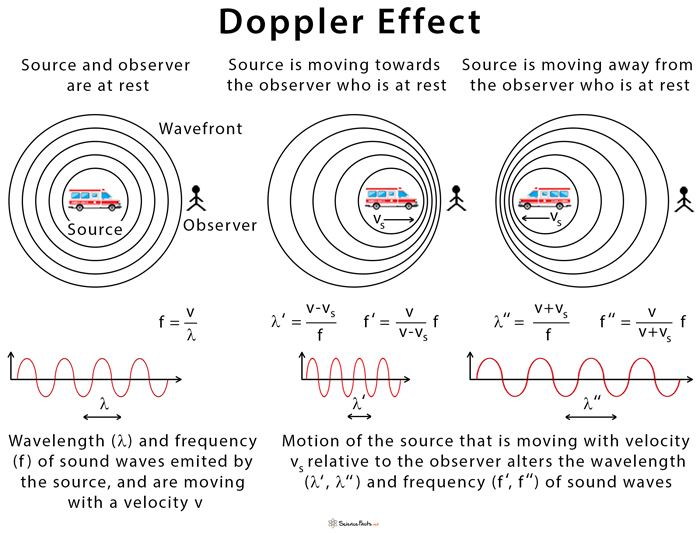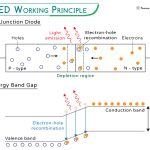Doppler Effect
Definition: What is the Doppler Effect?
The Doppler effect, or the Doppler shift, is observed whenever a source of waves is moving relative to an observer. It is defined as the change in wavelength and frequency of a wave emitted by the moving source relative to the observer, who can be stationary or moving. Doppler effect is produced only by a motion toward or away from the observer. The sideways motion does not produce such an effect.
The history of the Doppler effect goes back to 1842 when Austrian physicists Christian Doppler first observed it. While observing distant stars, Doppler described how the color of starlight changed with the movement of the star.
Example of Doppler Effect
The Doppler effect is a characteristic of any type of wave and is applied to a water wave, sound wave, and light wave. However, it is quite popular with the sound wave because of our everyday experience with it. Doppler effect occurs when a source of sound moves. A typical example is the change of pitch heard when a vehicle sounding its horn or siren as it approaches and recedes from an observer. The pitch heard by the observer depends on the frequency of the sound wave. A high frequency corresponds to a high pitch. While the siren produces waves of constant frequency, when it approaches the observer, the observed frequency increases and the observer hears a higher pitch. When it recedes from the observer, the observed frequency and pitch of the siren drop, and the observer hears a lower pitch. The actual pitch of the siren is somewhere between the pitches perceived by the observer as the vehicle approaches, and as it speeds away.
Doppler Effect in Astronomy
The Doppler effect is of intense interest to astronomers who use the information about the shift in frequency of electromagnetic waves, including visible light, produced by moving objects in faraway galaxies. This observation helps astrophysicists to derive information about those objects and galaxies. Electromagnetic radiation emitted by such objects in a distant galaxy would appear to be shifted downward in frequency (“redshift”) if the object is moving away from the Earth. On the other hand, there is an upward shift in frequency (“blueshift”) of such observed radiation if the object is moving towards the Earth. Astronomers rely on the Doppler effect to detect stars and planets outside of our solar system, commonly known as exoplanets.
Relativistic Doppler Effect
The relativistic Doppler effect is applied when astronomical objects, like stars and galaxies, move with a velocity comparable to the speed of light. In such a case, the effects described by the special theory of relativity is taken into account. Relativity modifies the Doppler effect due to time dilation. The modified relationship must be consistent with the Lorentz transformation.
Applications of Doppler Effect
The Doppler effect has many exciting applications beyond sound and astronomy.
- In Doppler radar to determine the speed of distant moving objects
- In weather observation to characterize cloud movement and weather patterns
- In police speed detectors to check the speed of passing vehicles
- Medical imaging also makes use of the Doppler effect to monitor blood flow through vessels in the body
-
References
Article was last reviewed on Thursday, February 2, 2023








One of best explaination of Doppler effect.